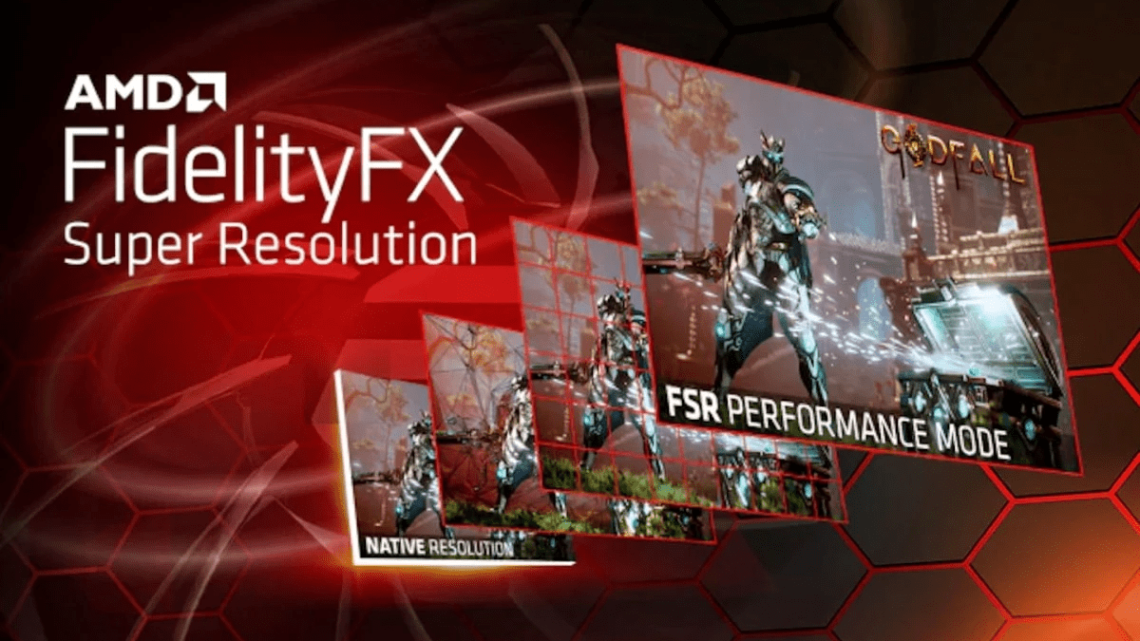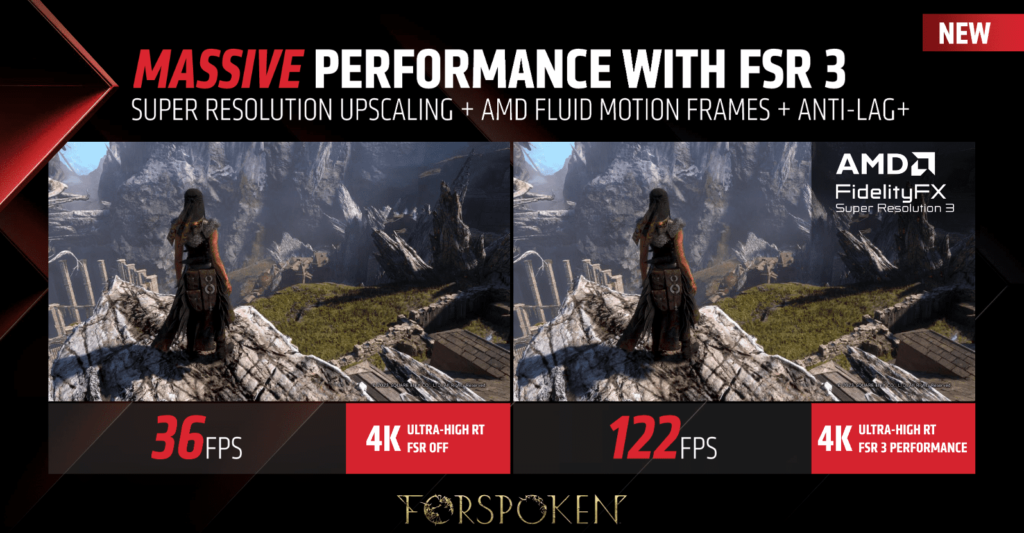
Everything You Need to Know About AMD FSR 3
September 6, 2023In the ever-evolving gaming world, staying ahead of the curve in terms of graphics and performance is crucial. One technology that has been making waves in the gaming industry is AMD’s FidelityFX Super Resolution 3, or FSR 3 for short. FSR 3 is AMD’s answer to Nvidia’s Frame Generation technology and DLSS 3, and it promises to revolutionize the way we experience games. But what exactly is AMD FSR 3, and how does it work? In this comprehensive guide, we will delve deep into the world of FSR 3, exploring its features, benefits, and everything you need to know.
Table of Contents
What Is AMD FSR 3?
AMD FSR 3 is a pretty cool upscaling technology that helps boost gaming performance and visual quality. It’s a response to Nvidia’s Frame Generation and DLSS 3 tech and basically works by inserting new frames in between the ones that are rendered with the full 3D pipeline. That means your frame rates go up, and you get a much smoother gaming experience, even if you don’t have a top-notch GPU.
How Does FSR 3 Work?
Frame Interpolation
FSR 3 uses frame interpolation, which is like Nvidia’s Frame Generation. This means making extra frames between the original ones, which increases your frame rate without stressing out your GPU. FSR 3 puts these frames in the right places so it can make your gaming better, cutting down on stutter and making it smoother.
Fluid Motion Frames (FMF)
FSR 3’s main feature is its use of Fluid Motion Frames, which give your gaming visuals a super smooth and natural feel. FMF works in harmony with frame interpolation, ensuring that the added frames seamlessly blend with the original ones, resulting in a highly immersive gaming experience.

When and Where to Expect FSR 3
As of the time of writing this article, FSR 3 has generated a considerable amount of buzz in the gaming community. Although it isn’t available yet, it’s confirmed to implement frame generation techniques similar to DLSS 3, albeit under the term “frame interpolation.” This technology is expected to bring a breath of fresh air to the gaming world, especially for those who struggle with performance issues on older GPUs or when playing less optimized games.
FSR 3: A Game-Changer in the Making
Open and GPU-Agnostic
FSR 3 has a lot going for it; it’s open-source and designed to work with any GPU, which is great news for game developers. They can easily use FSR 3 on multiple platforms, like PCs and consoles, so they can create a better gaming experience all around. It’s pretty versatile!
Improved Gaming Performance
The main goal of FSR 3 is to give gamers the best possible gaming performance – and it sure does deliver! Players can expect smoother gaming, fewer frame drops and possibly even higher frame rates, especially when the GPU is having difficulty with higher resolutions. It’s an awesome way to get the most out of your gaming experience without spending a fortune on a new graphics card.
Which is Better? FSR 3 or DLSS 3
FSR 3 doesn’t just aim to be another upscaling technology; it aspires to be a worthy competitor to Nvidia’s DLSS 3. Here, we’ll briefly compare the two technologies:
Frame Generation vs. Frame Interpolation
While DLSS 3 employs Frame Generation to create new frames, FSR 3 utilizes Frame Interpolation. Both techniques serve a similar purpose of increasing frame rates, but the methodologies differ. DLSS 3 focuses on generating entirely new frames, whereas FSR 3 inserts interpolated frames between existing ones. The choice between the two may come down to personal preference and specific gaming scenarios.
Compatibility and Accessibility
FSR 3 really stands out because of its design that’s open and works with any GPU, so both developers and gamers can use it. Unfortunately, DLSS 3 is only available to those with Nvidia GPUs, which is a bummer. But FSR 3’s compatibility with different hardware could give it an advantage in the long run.
Frequently Asked Questions
To address some common queries surrounding AMD FSR 3, let’s explore a few frequently asked questions:
- What GPUs Will Support FSR 3?
FSR 3’s GPU compatibility is a matter of anticipation. While AMD is likely to ensure that it supports it, the technology’s open nature could potentially lead to broader GPU support, benefiting gamers with various hardware configurations. - Is FSR 3 Available for Nvidia GPUs?
As of the current information available, FSR 3 is primarily associated with AMD GPUs. However, the open-source nature of FSR 3 might encourage wider adoption, including compatibility with Nvidia GPUs in the future. - Does AMD FSR Improve Performance?
Yes, AMD FSR 3 is designed to improve gaming performance significantly. By increasing frame rates and reducing stutter, it enhances the overall gaming experience, especially in scenarios where your GPU might struggle with higher resolutions.
In Conclusion…
AMD FSR 3 looks like it’s gonna be a real game-changer when it comes to gaming – providing a totally new way to up your graphics than Nvidia’s DLSS 3. It’s got this cool-sounding thing called ‘Fluid Motion Frames’ and it’s built to work with any type of GPU, making gaming a lot more accessible. We don’t know when it’s gonna be released, but the hype is real and we’re definitely keeping an eye out for FSR 3 in the near future!






